- Create Wiki Page
- All Pages

The Six Paths of Pain is an Outer Path technique that allows a Rinnegan user to manipulate up to six bodies as if they were their own.
When numerous bodies are controlled simultaneously, the user can see through all of their eyes, registering six distinct fields of vision at the same time. The user can coordinate their attacks and create defenses for their blind zones using this shared vision.
As a result, the Six Paths of Pain are most effective when used together, employing a combination of strategy, surprise, and/or pure overwhelming might to vanquish their opponents.
| Name | Six Paths of Pain |
| Classification | Kekkei Genkai, Fighting Style, Kinjutsu, Ninjutsu, Dōjutsu |
| Nature | NA |
| Rank | NA |
| Class | Offensive, Defensive, Supplementary |
| Users | Nagato Uzumaki, Obito Uchiha |
The Rinnegan user implants one or more black receivers into a body, allowing them to transfer chakra from considerable distances into it. To fully use the body, the user should transmit their chakra from the highest and closest place feasible as it allows for the greatest possible range. Once their chakra enters the body, they have entire control over it, allowing them to direct all of its activities, employ any jutsu and even communicate via it.
The controlled bodies’ eyes take on the same appearance as the user’s as a representation of this control. This technique was compared to the Yamanaka clan’s Mind Body Switch Technique, albeit on a larger scale, by Inoichi Yamanaka.
After being left crippled following his battle against Hanzō, Nagato developed the Six Paths of Pain. As a part of his “Pain” character, he controlled six corpses to carry out his will because he was unable to move or act on his own. The first body, Deva Path (Tendõ), belonged to his childhood friend Yahiko, who was his favorite.
He had other Paths’ hair coloured to match his late friend’s hair color, including the brows. Nagato’s initial Six Paths of Pain were made up of people that Jiraiya had met when they were alive. Nagato embeds their black receivers as body piercings throughout their bodies.
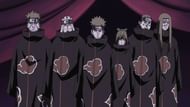
Each of the Six Paths of Pain can be used to employ any technique that Nagato is capable of, but he restricts each body to one branch of the Six Paths Techniques, with the exception of Yahiko’s body (the Deva Path), through which he performs a variety of jutsu; the King of Hell and the creatures summoned by the Animal Path are part of his shared vision.
Nagato refers to each entity by the Path as it represents and assigns them specific missions, whether offensive or defensive, reconnaissance or repair. Each Path has its own importance in a fight, with the Naraka Path being the most valuable due to its power to restore all other Paths, and as a result, Nagato will sacrifice other Paths to protect those higher up the hierarchy.
Nagato requires a significant amount of preparation time to use his Six Paths of Pain due to his lack of mobility, especially when going outside of his usual residence in Amegakure. Some of the Six Paths Techniques are particularly chakra-taxing, therefore Nagato must either pull the relevant body closer to his position or shut off control of the other five paths and focus all of his chakra onto the one.
The Six Paths of Pain’s main weakness is that each body has only one major skill; if an enemy knows which body performs what, they have a higher chance of overcoming the Paths. Sensors can follow Nagato’s chakra expenditure to control the paths back to him, revealing his true position. Nagato’s frequent change of chakra signature usually mitigates this. Naruto had to stab himself with one of Nagato’s black receivers in order to establish a direct link and track him with his Sage Mode sensing.

Nagato keeps the bodies in a concealed chamber within Amegakure’s tallest tower when not in use. There are six “pods” within the room where the bodies rested; each pod is connected to the wall through pipes or wires and has a sliding cover that appears to display the Amegakure emblem and conceals the face of the inactive body. The pods are likewise numbered one through six using daiji characters and are ordered counter-clockwise around the room, following the ordering of the six Buddhist Paths of Reincarnation.
Following are the Nagato’s Six Paths of Pains’ and their abilities:
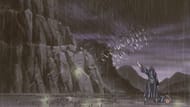
The Deva Path empowers the user to manipulate attracting and repulsive forces in objects and people. It also grants another ability: Chibaku Tensei, which allows the user to construct a massive makeshift terrestrial body out of all the surrounding matter that is drawn to a dark sphere generated by this method.
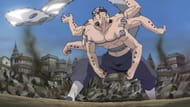
The Asura Path empowers the user to alter their own body in order to summon mechanised armour and different ballistic and mechanical weaponry.
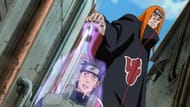
The Human Path allows the user to read any target’s mind by resting his hand on the target’s body or chest and plucking the soul out of the body.
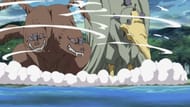
The Animal Path allows the user to summon numerous animals and creatures to aid them in battle. These creatures appear to be immortal, as they were killed and then resurrected. It’s worth noting that summoning creatures via the Animal Path requires no blood sacrifice or hand seals.
The Animal Path, like Nagato’s Paths and Konan, can summon through hand signs. Tactics-wise, it appears that the Animal Path’s major purpose in battle is to overwhelm several opponents with a bombardment of summons.
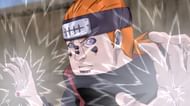
The Preta Path grants user the ability to absorb chakra in any form.
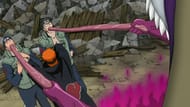
The Naraka Path grants the user two main abilities: interrogation and restoration by using the King of Hell.
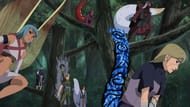
Using reborn jinchūriki, Obito Uchiha builds his own Six Paths of Pain during the Fourth Shinobi World War. Obito commands his Six Paths by Inserting a single black receiver into the left side of each of their chests, which are hidden from view. The receivers shift from the chest to the next when converted into the tailed beast. He also seals their tailed beasts back into their bodies, which he controls via the Demonic Statue of the Outer Path.
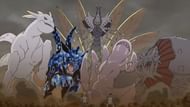
Obito can force the jinchūriki to shift into their full Tailed Beast Modes, but doing so increases the likelihood of the animals defying his directives. Obito does not channel the Six Paths Techniques into his Six Paths of Pain due to the amount of work required to keep six tailed beasts under his control at the same time.
Rather, he uses the same skills that they possessed while living, such as Rōshi’s Lava Release and Utakata’s Soap Bubble Ninjutsu. Obito’s Sharingan allows him to. See what his Paths view, which allows him to more accurately synchronize and use their skills.
A. Each of the bodies of the Six Paths has a name based on one of the six Buddhist Paths of Reincarnation: Deva, Asura, Human, Animal, Preta and Naraka. Each of these represent one of the realms into which a being is reborn after death, based on the accumulated karma of their previous lives.
A. All the six paths are considered Paths of suffering because they perpetuate the cycle of Reincarnation; the only way to break the cycle and ascend to a higher state of existence is to attain enlightenment.
A. The technique’s disadvantage is that, if the caster is interrupted in any manner while transmitting chakra to the bodies employed in the method, all of the bodies will stop moving and become very vulnerable to assault.